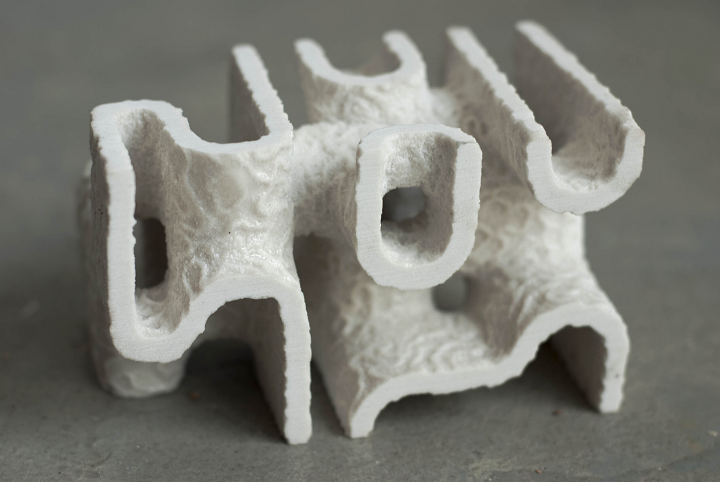According to the US Environmental Protection Agency (EPA), 25% of all marine life is dependent upon the biodiverse underwater ecosystems known as coral reefs. Unfortunately, as coral reef conservation organization SECORE International reports, 55% of the world’s coral reefs have died over the last thirty years, and we could lose 99% of the existing ones within the next century if something isn’t done to help. Overfishing and pollution both majorly threaten coral reefs, but another big issue is climate change, which is why a design technologist in California is using 3D printing to help save the marine ecosystem by restoring coral reefs that have been negatively impacted.
This design technologist, Alex Schofield, is the director of Objects and Ideograms, which, according to the website, has “an obsession of materiality and its meaning to us in various global contexts.” The workshop has used 3D printing for other projects like a coffee table and coffee bar, but Schofield has been working since 2019 to use his knowledge of coral research, computational design, and 3D modeling to create complex surfaces out of calcium carbonate—a limestone from which coral skeletons are made.
“A lot of the coral reefs are going through a very traumatic time,” Schofield explained in a video. “The temperature of the water is rising. They can’t simply take the heat. A lot of the way in which they create food for themselves, and also the way in which they take CO2 out of the water to make their skeletons, they can’t do that really well when the temperature has risen so dramatically around them. Beyond that, it becomes a more global issue of fixing the problems that are raising this temperature to begin with.
“Coral reefs were a really interesting challenge for me. I kind of fell into in a little bit of an accident. I had a friend who said ‘hey, do you think you can 3D print coral?”
This material substrate is biomimicry at its finest—the calcium carbonate is ground down into a fine powder, which is then 3D printed, using binder jet technology, in order to copy the tough, textural structure that houses the living polyps in coral.
“This unique material development has led to the invention of a working prototype in support of a wide range of ocean life ecosystems by fabricating and reseeding a 3D printed synthetic calcium carbonate scaffold. The 3D printed coral is currently being tested with 3D printed structures, tiles, and frags used to further research and test live applications and support of coral seeding, regrowth, as well as a biological substrate for the growth of other ocean life,” Objects and Ideograms explains on its website.
Together with the California College of the Arts, Schofield’s workshop has attached the 3D printed calcium carbonate scaffolds to an environmental demonstration project and research platform called the Buoyant Ecologies Float Lab, created by designers and architects and deployed in the San Francisco Bay in 2019. The lab is a floating breakwater structure that uses an “ecologically optimized fiber-reinforced polymer composite substrate,” and features varied topographies that perform tasks both above and below the water, such as channeling rainwater into watershed pools for intertidal habitats and providing underwater habitats.
“We get a very interesting and diverse amount of things that grow. We have seen baby oysters that begin to grow. There was a tiny crab that was living in there,” Schofield said about the floating lab. “There are all sorts of different kind of algae and microorganisms that are there that actually create a lot of the food and environments that support things like fish and oysters.”
The workshop’s project has secured a proprietary pending patent for the production and application of its proprietary 3D printed calcium carbonate material, which can be fabricated in a variety of forms to accommodate many aquatic organisms, in the hopes of offering a healthy, diverse underwater ecosystem to restore coral reefs.
“I hope that this work can actually find a lot of use in the wild and applications. That doesn’t mean just me printing a bunch of things myself. It means other people printing things. It means a lot of scientists, a lot of people on the ground who are actively doing work taking these and putting them out into the wild and actually having coral have a lot of benefit in that it has a home to begin to grow into,” Schofield said.
